The Size of the Planet Matters
|
Mercury
(small) |
Venus
(medium sized) |
Jupiter
(very large) |
|
|
|
|
| Hydrogen (H) |
less than 1 hour |
days |
over the age of the Universe |
|
|
|
|
| Helium (He) |
roughly 1 day |
100 times the age of the solar system |
over the age of the Universe |
|
|
|
|
| Oxygen (O) |
800 million years |
over the age of the Universe |
over the age of the Universe |
|
|
|
|
Scientists think that the original air of many earth-like planets drifted away, and the air they have today came out from inside the planet.
This table shows the time it takes for some of the molecules of the air to escape from a planet. The table shows that as the planets get bigger, it is harder for the molecules to escape.
The table shows that the average time for any molecules to escape from Jupiter's gravity is much too long. The same is true for all the Giant planets. Therefore probably all the molecules in Saturn's atmosphere are the same ones drawn to the planet when it was forming.
 Return to atmosphere
Return to atmosphere
You might also be interested in:
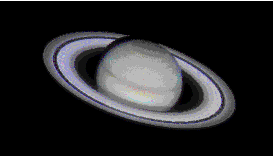
The dramatic appearance of Saturn stems mainly from the spectacular rings. The atmosphere looks much less dramatic. The clouds of Saturn are much less colorful than those of Jupiter. This is because the
...more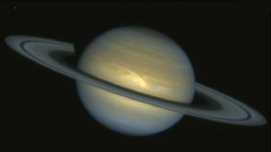
The most important motions in the atmosphere are winds. The major winds in Saturn's atmosphere are the zonal winds which are made of zones and belts. Zones are high pressure systems and belts are low pressure
...more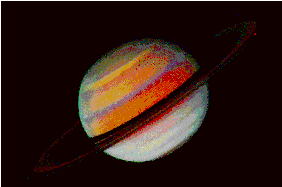
The striped cloud bands on Saturn, like Jupiter, are divided into belts and zones. In a belt, the wind flows very strongly in one direction only. In a zone, the wind flows very strongly in exactly the
...more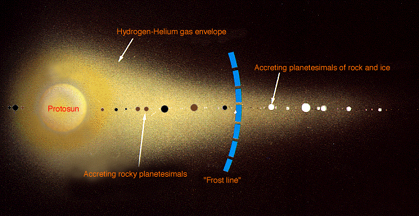
The position of the planets in the solar nebula greatly affected their 1. size and 2. composition. This is because of the effect of how cold it was in the nebula. 1. The nebula was a lot warmer close to
...more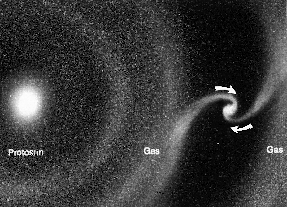
As shown in this picture, while they were forming in the solar nebula, the nucleii of the planets-to-be (called protoplanets) drew material to themselves from the cloud of gas and dust around them. The
...more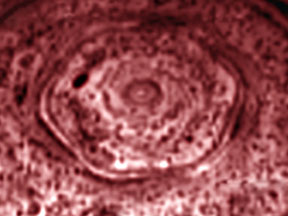
Astronomers have discovered a strange shape in Saturn's atmosphere. The shape is a hexagon. The hexagon is near Saturn's North Pole. Scientists aren't quite sure why Saturn has the hexagon shape in its
...more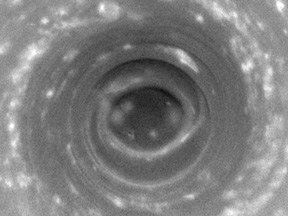
Saturn's South Pole is very stormy. It is also surprisingly warm. A huge, hurricane-like storm is centered on the South Pole. Astronomers recently discovered that the pole is also warmer than any other
...more















